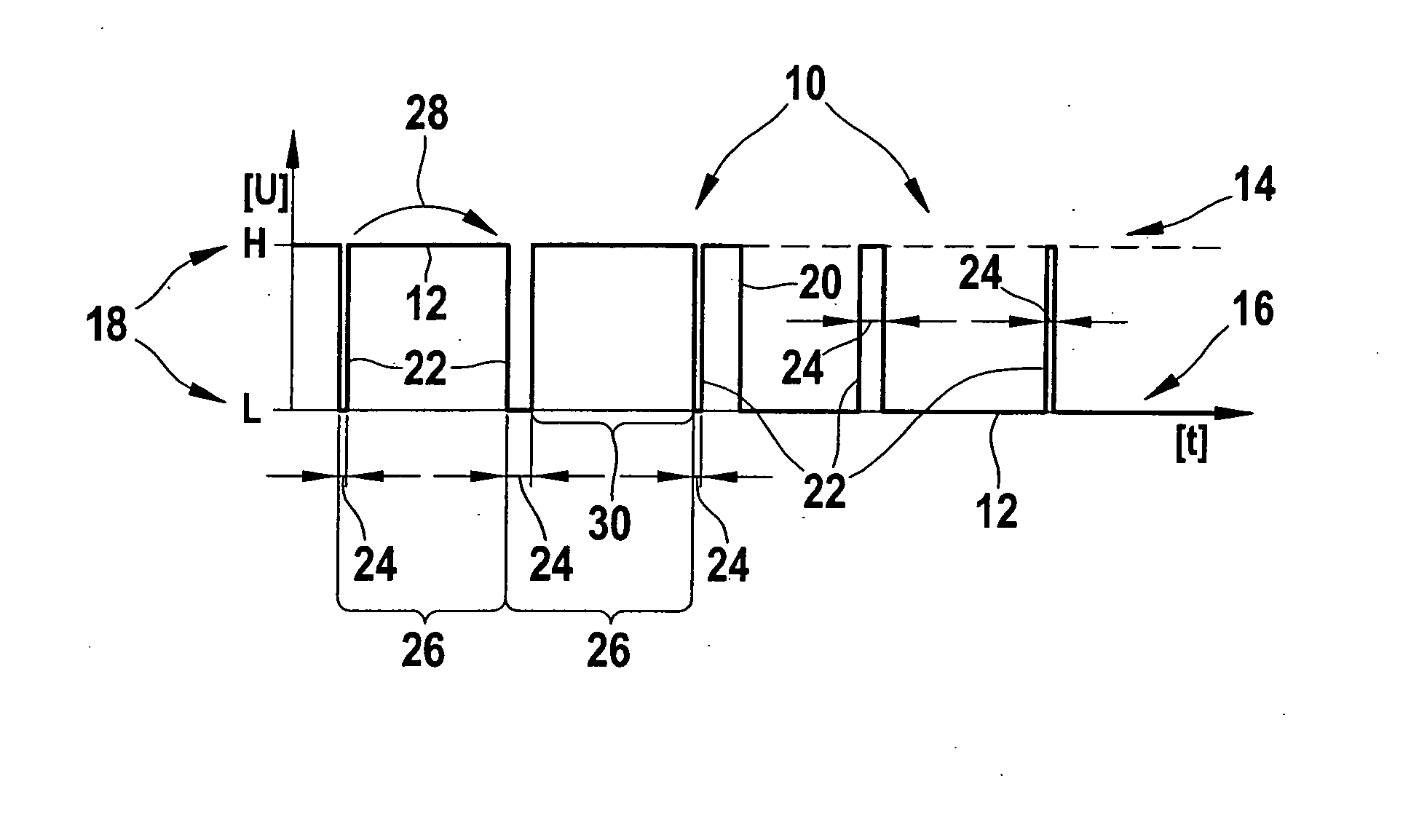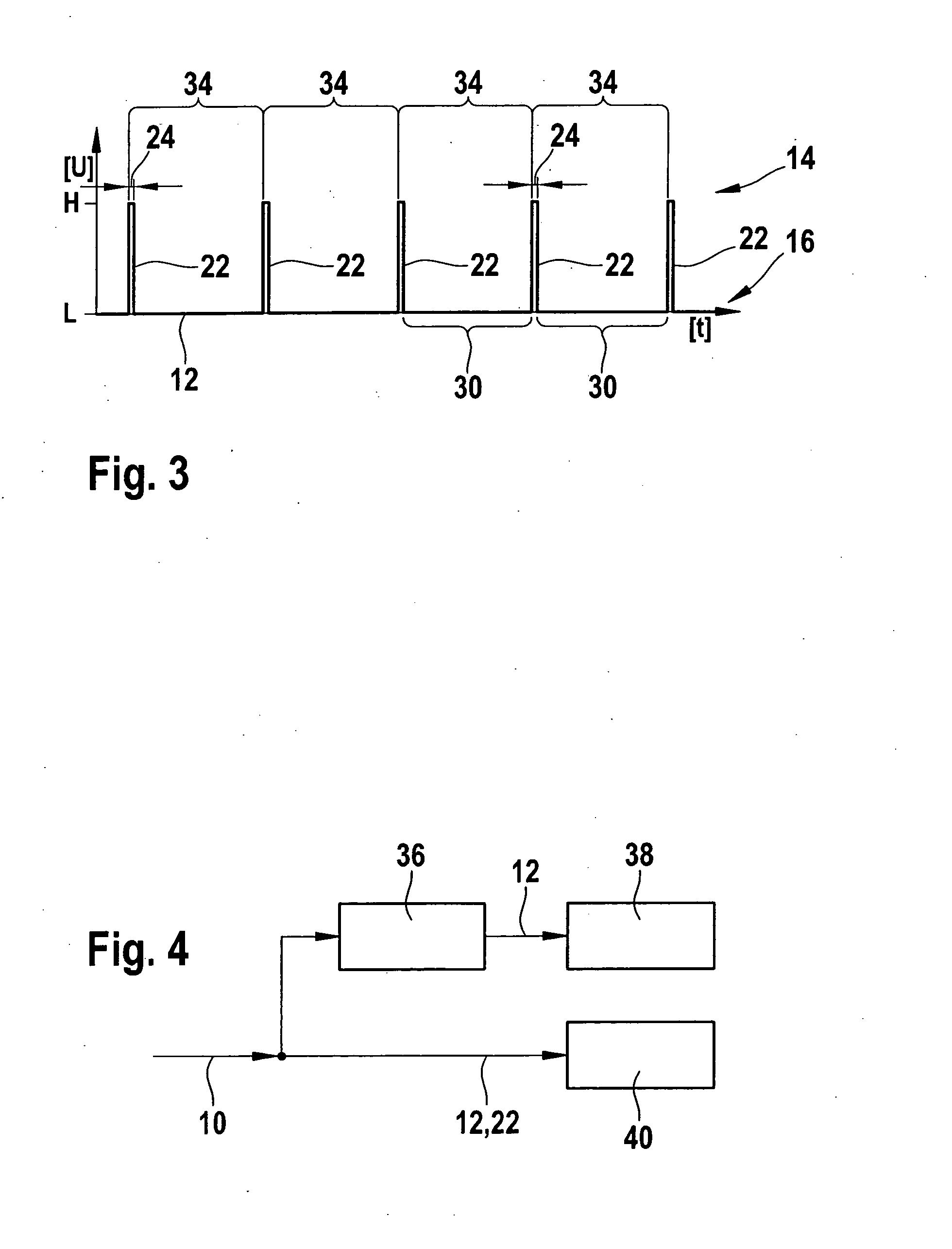Method for increasing the information density in signal-transmission lines
- Summary
- Abstract
- Description
- Claims
- Application Information
AI Technical Summary
Benefits of technology
Problems solved by technology
Method used
Image
Examples
Embodiment Construction
[0016] An exemplary embodiment of the modulated signal provided by the present invention, where a further, encoded pulse signal is superimposed on a digital carrier signal, may be taken from the representation of FIG. 1.
[0017] A modulated signal 10 provided by the present invention includes a digital signal 12 used as a carrier signal. Digital signal 12 may assume a level 18, which corresponds to either a high level 14 (H) or a low level 16 (L). Digital signal 12 of modulated signal 10, shown in FIG. 1, has a level change 20, at which high level 14 of digital signal 12 changes into low level 16. High level 14 corresponds to the level of the supply voltage, whereas low level 16 corresponds to the sensor ground.
[0018] Digital signal 12 is superimposed with an encoded pulse signal 22. Encoded pulse signal 22 includes individual pulses, which are generated at a predefined pulse frequency 26. The individual pulses are separated from each other by interpulse periods 30, which correspond...
PUM
 Login to View More
Login to View More Abstract
Description
Claims
Application Information
 Login to View More
Login to View More - R&D
- Intellectual Property
- Life Sciences
- Materials
- Tech Scout
- Unparalleled Data Quality
- Higher Quality Content
- 60% Fewer Hallucinations
Browse by: Latest US Patents, China's latest patents, Technical Efficacy Thesaurus, Application Domain, Technology Topic, Popular Technical Reports.
© 2025 PatSnap. All rights reserved.Legal|Privacy policy|Modern Slavery Act Transparency Statement|Sitemap|About US| Contact US: help@patsnap.com



